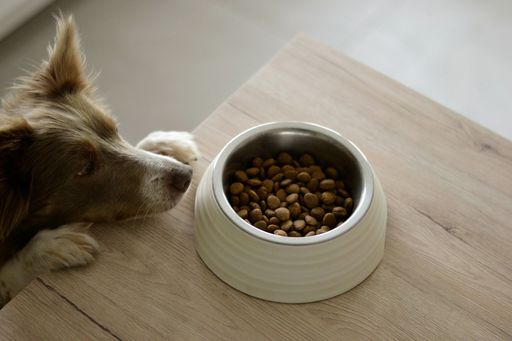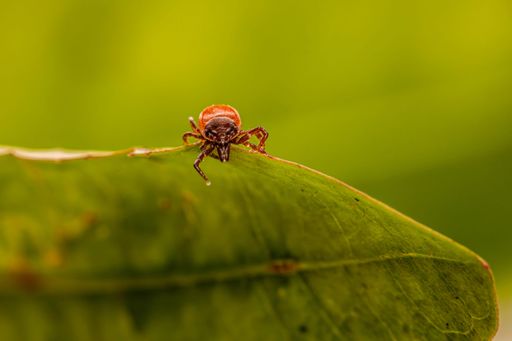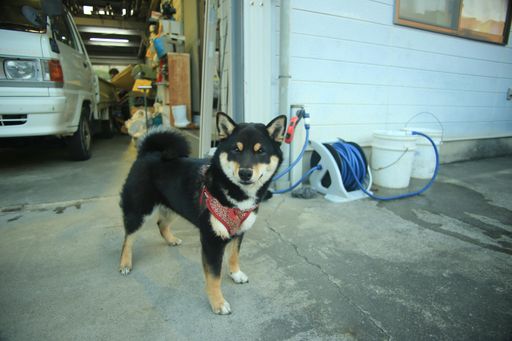Dogs can be susceptible to a range of skin issues, and fungal infections are among the most prevalent.
In this article, we will delve into the world of antibacterial and antifungal dog shampoos, guiding you on how to select the best products to keep your canine companion's skin healthy and itch-free.
Say goodbye to those pesky fungal foes as we explore the crucial factors to consider when choosing the right shampoo for your four-legged friend.
What are Fungal Infections in Dogs and Why are They Harmful?
Fungal infections are infections caused by fungi, which are microscopic organisms that can grow on the skin, hair, nails, or internal organs of animals and humans. Fungi can be found in the environment, such as in soil, plants, or decaying matter, but some of them can also cause disease when they invade the body of a susceptible host.
Dogs can get fungal infections from various sources, such as inhalation, ingestion, contact with contaminated objects or surfaces, or through wounds or bites. Some fungal infections can affect only the skin or ears of dogs, while others can spread to the whole body and cause serious complications. Fungal infections can be very harmful to dogs because they can cause:
- Itching, irritation, inflammation, and pain in the affected areas
- Hair loss, scaling, crusting, and ulceration of the skin
- Discharge, odor, and bleeding from the ears or nose
- Coughing, sneezing, difficulty breathing, and fever
- Loss of appetite, weight loss, lethargy, and depression
- Organ damage, sepsis, and death in severe cases
Fungal infections can also weaken the immune system of dogs and make them more prone to other infections or diseases. Therefore, it is important to recognize the signs and symptoms of fungal infections in dogs and seek veterinary attention as soon as possible. Using the best antibacterial and antifungal dog shampoo can help treat and prevent fungal infections on the skin and coat.
Common Signs and Symptoms of Fungal Infections in Dogs
The signs and symptoms of fungal infections in dogs may vary depending on the type and severity of the infection, as well as the location and extent of the fungal growth. However, some of the common signs and symptoms that may indicate a fungal infection in dogs are:
- Intense itching, licking, biting, or scratching at the affected areas
- Redness, swelling, heat, or tenderness of the skin or ears
- Flaky, scaly, crusty, or greasy patches on the skin or coat
- Hair loss or bald spots on the skin or coat
- Ring-shaped lesions or circular areas of hair loss on the skin
- Pimples, bumps, nodules, or abscesses on the skin
- Oozing, draining, or bleeding from the skin or ears
- Foul-smelling or discolored discharge from the ears or nose
- Shaking the head, pawing at the ears, or tilting the head to one side
- Coughing, sneezing, wheezing, or difficulty breathing
- Fever, chills, shivering, or weakness
- Loss of appetite, weight loss, vomiting, diarrhea, or dehydration
- Changes in behavior, mood, or activity level
If you notice any of these signs and symptoms in your dog, you should take your dog to the vet for a proper diagnosis and treatment. Your vet will examine your dog’s skin and ears for any signs of fungal infection and may also take samples of skin scrapings, hair plucks, ear swabs, blood tests, urine tests, or tissue biopsies for laboratory testing. Your vet will then confirm the type and cause of the fungal infection and prescribe the appropriate treatment for your dog.
Types of Fungal Infections in Dogs and How to Diagnose Them
There are many types of fungal infections that can affect dogs. Some of the most common ones are:
- Yeast infection: This is a type of fungal infection caused by an overgrowth of yeast (a type of fungus) on the skin or ears of dogs. Yeast infection is also known as Malassezia dermatitis or otitis externa. Yeast infection can cause itching, inflammation, greasiness, odor, and discharge from the affected areas. Yeast infection can be diagnosed by examining a sample of skin or ear discharge under a microscope for yeast cells.
- Ringworm: This is a type of fungal infection caused by several species of fungi that can infect the skin, hair, or nails of dogs. Ringworm is also known as dermatophytosis. Ringworm can cause circular patches of hair loss, scaling, crusting, and redness on the skin. Ringworm can be diagnosed by examining a sample of hair or skin under a special ultraviolet light (Wood’s lamp) for fluorescence, or by culturing a sample of hair or skin on a special medium for fungal growth.
- Aspergillosis: This is a type of fungal infection caused by several species of fungi that can infect the nasal cavity, sinuses, or lungs of dogs. Aspergillosis is also known as nasal aspergillosis or pulmonary aspergillosis. Aspergillosis can cause nasal discharge, bleeding, pain, sneezing, coughing, breathing difficulties, and fever. Aspergillosis can be diagnosed by taking x-rays, computed tomography (CT) scans, or endoscopy of the nose or lungs, and by testing a sample of nasal or lung tissue for fungal elements.
- Blastomycosis: This is a type of fungal infection caused by a fungus that can infect the lungs, skin, bones, eyes, or other organs of dogs. Blastomycosis is also known as North American blastomycosis or Gilchrist’s disease. Blastomycosis can cause coughing, breathing difficulties, fever, weight loss, skin lesions, eye inflammation, or lameness. Blastomycosis can be diagnosed by taking x-rays or CT scans of the chest or bones, and by testing a sample of blood, urine, or tissue for fungal elements.
- Histoplasmosis: This is a type of fungal infection caused by a fungus that can infect the lungs, gastrointestinal tract, liver, spleen, or other organs of dogs. Histoplasmosis is also known as Ohio River Valley fever or Darling’s disease. Histoplasmosis can cause coughing, breathing difficulties, fever, weight loss, diarrhea, vomiting, or enlarged lymph nodes. Histoplasmosis can be diagnosed by taking x-rays or CT scans of the chest or abdomen, and by testing a sample of blood, urine, or tissue for fungal elements.
- Coccidioidomycosis: This is a type of fungal infection caused by a fungus that can infect the lungs, skin, bones, joints, or other organs of dogs. Coccidioidomycosis is also known as Valley fever or San Joaquin Valley fever. Coccidioidomycosis can cause coughing, breathing difficulties, fever, weight loss, skin lesions, lameness, or swollen joints. Coccidioidomycosis can be diagnosed by taking x-rays or CT scans of the chest or bones, and by testing a sample of blood, urine, or tissue for fungal elements.
How to Choose the Best Antibacterial and Antifungal Dog Shampoos
If your dog has a fungal infection, your vet will prescribe the appropriate medication for your dog, which may include oral antifungal drugs, topical antifungal creams or ointments, or injectable antifungal drugs. In addition to these medications, your vet may also recommend using an antibacterial and antifungal dog shampoo to help cleanse and soothe your dog’s skin and coat.
An antibacterial and antifungal dog shampoo is a special type of shampoo that contains ingredients that can kill or inhibit the growth of bacteria and fungi on your dog’s skin and coat. These ingredients may include chlorhexidine, ketoconazole, miconazole, benzoyl peroxide, salicylic acid, sulfur, or tea tree oil. An antibacterial and antifungal dog shampoo can help:
- Remove dirt, debris, and dead skin cells from your dog’s skin and coat
- Reduce itching, irritation, inflammation, and odor from your dog’s skin and coat
- Prevent secondary bacterial infections from occurring on your dog’s skin and coat
- Enhance the effectiveness of other antifungal medications that your dog is taking
When choosing an antibacterial and antifungal dog shampoo for your dog, you should consider the following factors:
- The type and severity of the fungal infection that your dog has
- The ingredients and concentration of the shampoo
- The pH level and fragrance of the shampoo
- The frequency and duration of use of the shampoo
- The compatibility and safety of the shampoo with other medications that your dog is taking
You should consult with your vet before using any antibacterial and antifungal dog shampoo for your dog. Your vet will advise you on which shampoo is best suited for your dog’s condition and how often and how long you should use it. You should also follow the instructions on the label of the shampoo carefully and avoid getting it into your dog’s eyes, mouth, or ears.
Tips for using antibacterial and antifungal dog shampoos effectively
To use an antibacterial and antifungal dog shampoo effectively for your dog, you should follow these tips:
- Wet your dog’s coat thoroughly with warm water
- Apply a generous amount of shampoo to your dog’s coat and massage it gently into the skin
- Leave the shampoo on your dog’s coat for 5 to 10 minutes or as directed by your vet
- Rinse your dog’s coat thoroughly with clean water
- Dry your dog’s coat with a clean towel or a hair dryer on low heat
- Repeat the process as often as recommended by your vet
- Avoid bathing your dog more than necessary as it may dry out or irritate your dog’s skin
- Use a conditioner or moisturizer after bathing your dog if needed to restore moisture and softness to your dog’s coat
Well, That’s a Wrap
In conclusion, choosing the best antibacterial and antifungal dog shampoo is a crucial step in maintaining your pet's skin health and overall well-being. By considering factors such as ingredients, your dog's specific needs, and consulting with your veterinarian, you can make an informed decision to combat fungal infections effectively.
Remember that a clean and healthy coat not only contributes to your dog's comfort but also strengthens the bond between you and your furry companion. So, invest in the right shampoo, and together, you and your dog can continue to enjoy a happy and itch-free life.



















